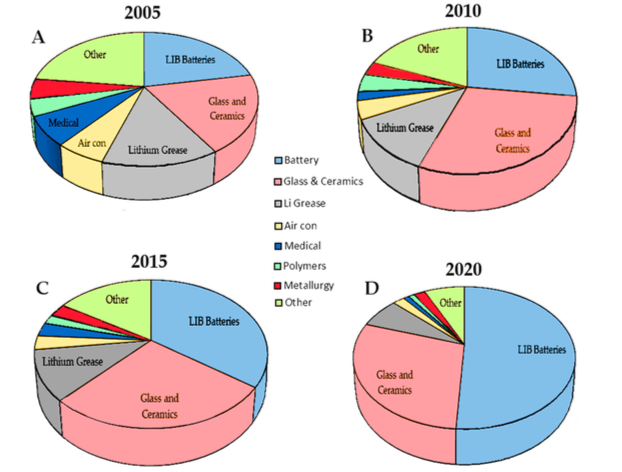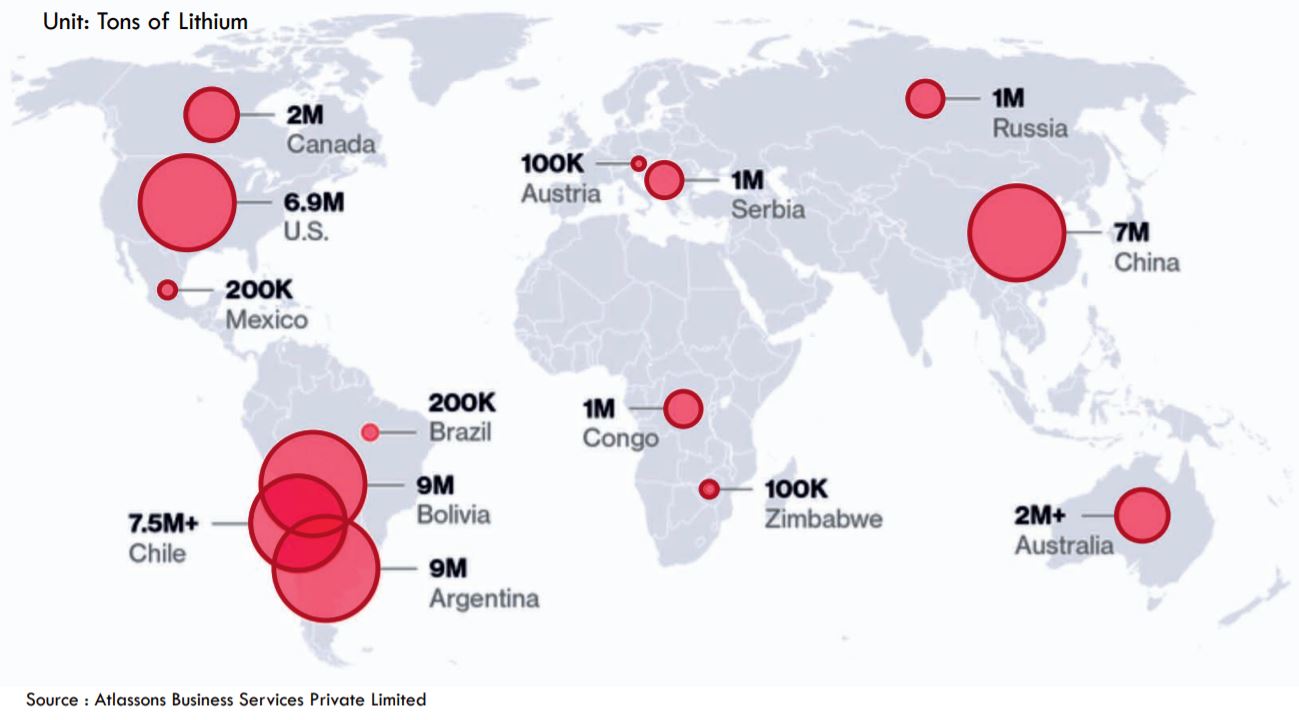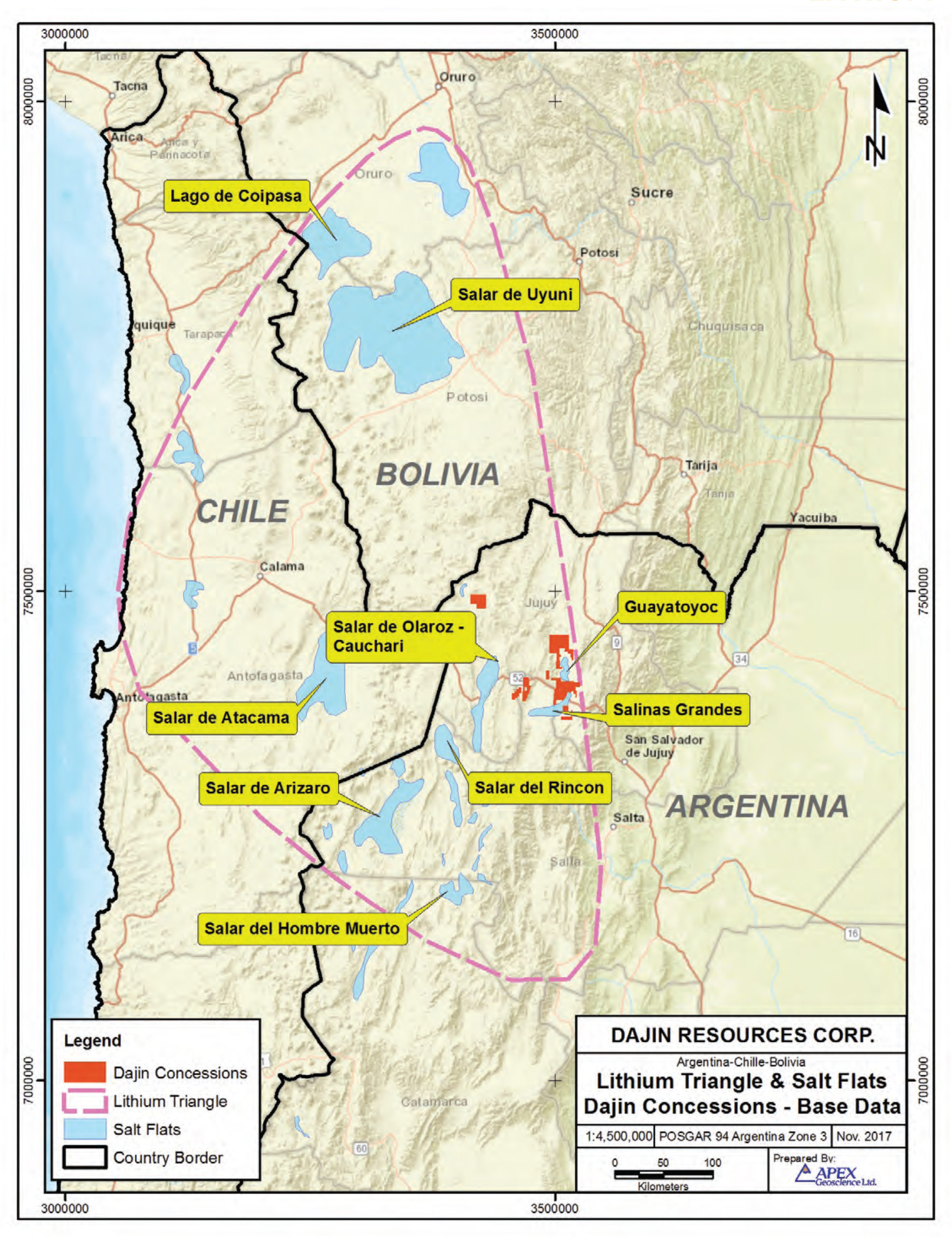It is fair to say that lithium ion batteries play an important role in powering the modern world, but do they really align with a sustainable future?
Earth.Org takes a closer look.
—
Lithium is the go-to choice when it comes to battery production today due to its light weight and its excellent electricity conductance. A recent study has shown that these batteries can withstand temperature up to 80 °C, (compared to traditional technology’s 55–60 °C) allowing them to withstand more intensive activity with less loss of battery life. These advantages have made lithium ubiquitous in today’s energy storage industry.
Aside from powering our smartphones and computers, lithium-ion batteries (LIB) are also used in medical equipment, electric vehicles power tools, household applicances and many more. As you can see from the pie charts below, the usage of lithium (blue) on LIB batteries has increased massively in the past two decades, and is expected to do so 10-fold in the next.

Source: Kavanagh et al. (2018).
The rise of electric vehicles has direct a connection with the demand for lithium. On average, electric vehicles (EVs) emit half as much carbon dioxide (around 4,450 pounds of CO2 equivalent each year) than conventional gasoline cars. With the world scrambling for new clean energy solutions, car companies such as BMW, Nissan and Tesla, have been coming out with more EV models to meet consumers’ demands. It has been said that by 2040, 57% of all passenger vehicle sales, and more than 30% of the global passenger vehicle fleet, will be electric (EVs accounted for 2.6% of global car sales and about 1% of global car stock in 2019). But do LIB-powered EVs really represent a viable alternative for a sustainable future?
Despite its efficiency as a battery, there are still on-going debates on lithium battery’s environmental friendliness due to its extraction method. Lithium is extracted through “water-mining”, which requires an enormous amount of water throughout the process and toxic chemicals are needed to process lithium, leading to frequent water contamination and shortage in lithium-producing countries. The largest reserves are in the Andes mountain range, shared between Argentina, Bolivia and Chile in what is called the Lithium Triangle. Australia and China also have large reserves, and the latter controls most LIB production today.

People in the Tibetan town of Tagong protested against the environmental damage caused by the Ganzizhou Rongda mining operation after contaminated water killed fish and livestock in 2016.
A study investigated the environmental degradation lithium mining caused in the Atacama Salt Flat in Chile, which holds the largest lithium reserves on earth by a large margin. Here, extracting a ton of lithium costs 500,000 gallons of water.

The Lithium Triangle, containing the shared deposits between Chile, Bolivia and Argentina in the Andes Mountains. Source: AIS Resources.
Unsurprisingly, the area is now dried up, with widespread vegetation death and chemical contamination to top things off. The main problem is that the mining practices are essentially unsustainable due to the natural water cycles in the area.
Further, we still haven’t figured out how to recycle LIB. For instance, only 2% of Australia’s 3,300 tons of lithium ion waste is recycled. Part of the problem lies in the manufacturer’s secrecy about the exact composition of their product. The University of Birmingham in the UK is working under the US $312 million Faraday Challenge to solve this problem.
On the private side, Tesla Vehicles recently announced that it is developing a “unique battery recycling system” to process both battery manufacturing scrap and end-of-life batteries. It is still unclear how this system will work but Tesla ensures that it maximises the recovery rate of critical minerals such as lithium and cobalt; and materials recovered will be utilised in new battery material production. A typical EV has roughly 10kg of lithium from the 5,000 battery cells built in it. If such recycling technology was obtained and widely applied, demand for lithium could be managed properly and less impacts to the environment would be brought.
This article was written by Wing Ki Leung and Owen Mulhern.
You might also like: The Resilience of Sharks, And What their Decline Means
Cover photo by Mika Baumeister on Unsplash .
References
-
Kavanagh, Laurence, et al. “Global lithium sources—industrial use and future in the electric vehicle industry: a review.” Resources 7.3 (2018): 57.










![The Statistics of Biodiversity Loss [2020 WWF Report]](https://u4d2z7k9.rocketcdn.me/wp-content/uploads/2020/12/lprwinkyTHB-544x306.jpg)





